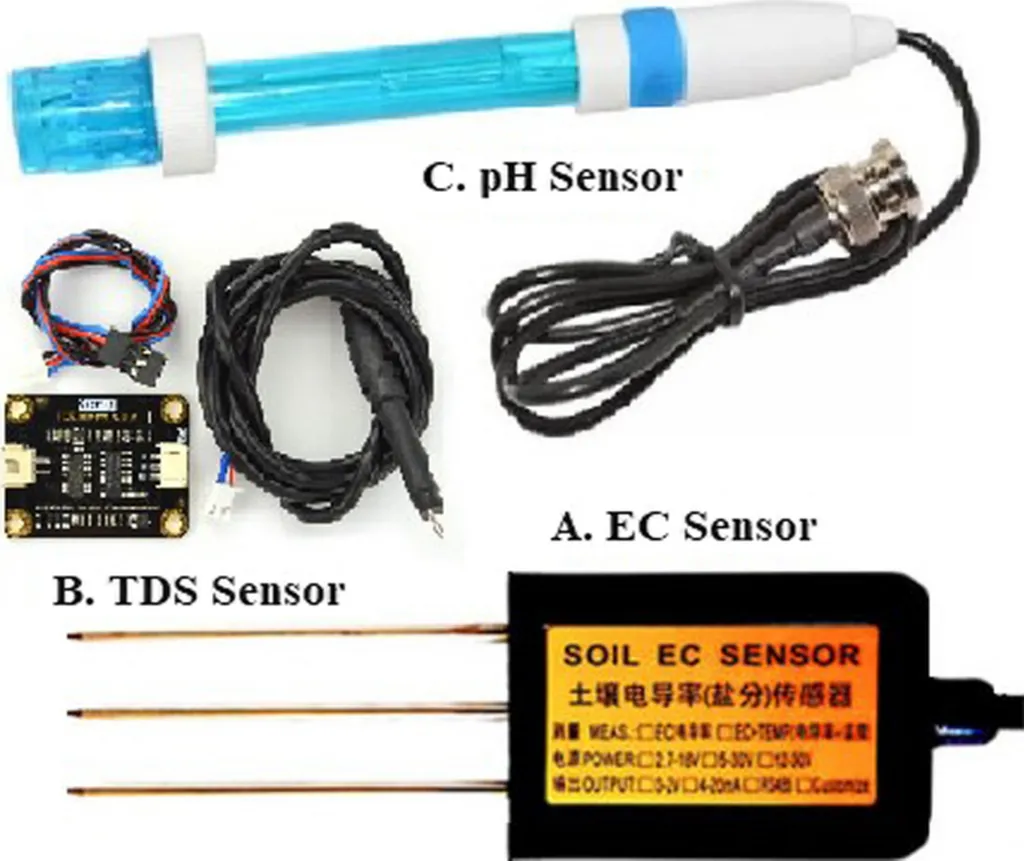In the heart of Michigan, researchers are tackling a pressing issue in modern agriculture: the accuracy of soil moisture sensors in saline conditions. Najme Yazdanpanah, a researcher at Michigan State University’s Biosystems and Agricultural Engineering department, has led a study that sheds light on how salinity affects the performance of Internet of Things (IoT)-based soil moisture sensors. The findings, published in the journal *Smart Agricultural Technology* (translated as “Intelligent Agricultural Technology”), could have significant implications for precision irrigation and smart soil monitoring, particularly in regions with high soil salinity.
The study evaluated five different soil moisture sensors—Soil Watch 10, GroPoint, CS655, Drill & Drop, and TDR 310H—under varying levels of salinity. The experiments were conducted using a soil column irrigated with different salinity levels, ranging from 0 to 8 dS/m. The researchers used the gravimetric method as a reference for calibration, ensuring accurate soil moisture measurements.
“Our goal was to quantify the effect of salinity on the accuracy of these sensors,” Yazdanpanah explained. “We found that as salinity levels increased, the degree of overestimation and underestimation by the sensors also increased. However, the TDR 310H sensor stood out as it did not exhibit distortion at high salinity levels.”
The study also assessed both linear and nonlinear (power and exponential) calibration models to describe the relationship between sensor outputs and gravimetric reference moisture data. Under low-salinity conditions (EC < 2 dS/m), most sensors showed a strong linear correlation (R² > 0.91), except for the TDR. The exponential model performed consistently well under saline conditions, providing the desired accuracy.
So, what does this mean for the future of precision irrigation and smart soil monitoring? Yazdanpanah believes that understanding the limitations and strengths of different sensors under varying soil conditions is crucial. “This research highlights the importance of selecting the right sensor for the right conditions,” she said. “For high soil salinity levels, the TDR 310H sensor is suggested as the best choice.”
The findings could shape future developments in the field, particularly in regions where soil salinity is a significant challenge. As the world moves towards more sustainable and efficient agricultural practices, the role of IoT-based soil moisture sensors becomes increasingly important. This research provides valuable insights that could help farmers and agritech companies make more informed decisions, ultimately leading to better crop yields and more efficient water use.
In the broader context, the energy sector could also benefit from these findings. Precision irrigation systems that rely on accurate soil moisture data can significantly reduce water and energy consumption. By optimizing irrigation schedules based on real-time soil moisture data, farmers can minimize water waste and reduce the energy required for pumping and distributing water.
As the agricultural industry continues to evolve, the integration of IoT technologies and smart sensors will play a pivotal role. Yazdanpanah’s research is a step forward in ensuring that these technologies are reliable and accurate, even under challenging soil conditions. The findings published in *Smart Agricultural Technology* serve as a reminder that the path to sustainable agriculture is paved with continuous research and innovation.

